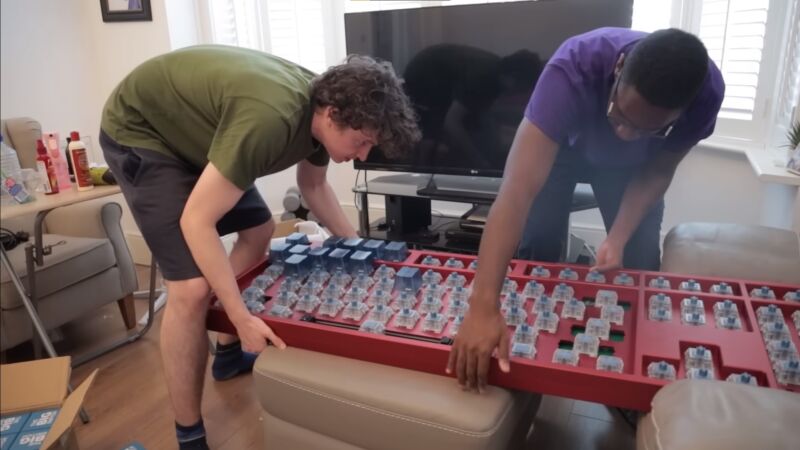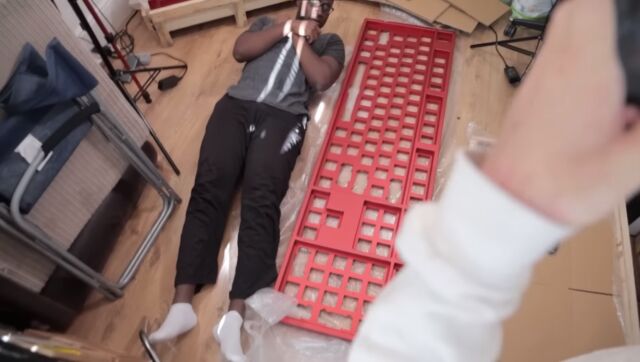Monstrous DIY mechanical keyboard cost $14,000 to build

Sometimes, bigger is better. And sometimes, bigger is just… massive. That’s the word that comes to mind when looking at and pricing the latest DIY mechanical keyboard from YouTuber Glarses that’s as long and costly as he is tall.

As you might imagine, mechanical keyboards with buttons so big you could comfortably use more than one finger to press one are rather rare. Budget peripheral-maker Redragon has one that you can actually buy that is 1.9 feet long, 7.95 inches deep, and 2.33 inches tall. Google has also played with lengthy keyboards for fun, with Google Japan’s Gboard Stick Version prototype measuring 5.25 feet long. And Razer, the inspiration for Glarses’ build, has shown off a gargantuan tenkeyless (TKL) keyboard at CES with functioning RGB switches.
Despite all that chassis, though, none of those jumbo boards managed to include a traditional numpad. Glarses’ giant keyboard, on the other hand, was made with the mammoth number-cruncher in mind.
As detailed in the video spotted by sites like Review Geek and Dexerto, Glarses’ custom keyboard included 3D-printed case parts assembled together with friends, plus giant, scaled PCB-and-3D-printed keycaps.
Like Razer’s gargantuan keyboard, Glarses’ DIY clacker uses 110 of NovelKeys’ (Pale Blue) Big Switch. Each switch in the Big Switch series has 64 times the volume of a traditional Cherry MX switch and an MSRP of $18.
“Soldering giant switches is exactly the same as soldering small switches, it just takes 10 times longer,” Glarses said.

As if lugging giant keyboard case parts wasn’t tedious enough, Glarses even lubed each switch. It reportedly took 10 minutes to open each one, which shows just how important smooth keypresses with a clean sound are to keyboard builders. Glarses said he used 100 g (3.5 ounces) of Krytox GPL 205g0 for the job.
That said, there may still be some wobbly or loose keys on this oversized peripheral. The builder had trouble getting the 3D-printed stabilizers for large keys, like backspace and enter, to fit and said they “felt really bad.” So, the only key in the completed build with a stabilizer is the spacebar. The spacebar is longer than that in the average TKL keyboard, so it’s no surprise it demanded extra stability.

Manufacturing, shipping, and import costs made for a build price as large as the peripheral itself, at “about” 12,000 pounds (around $14,000), according to the video. (And for those assuming big-name sponsors footed the bill, Glarses claimed to have paid for this with his YouTube company’s own money, as two sponsors dropped out mid-build.)
Glarses’ video shows the keyboard functioning, and he’s even taking it on some gaming sessions.
You can watch Glarses’ monster keyboard come to life in the video below:
https://arstechnica.com/?p=1915317